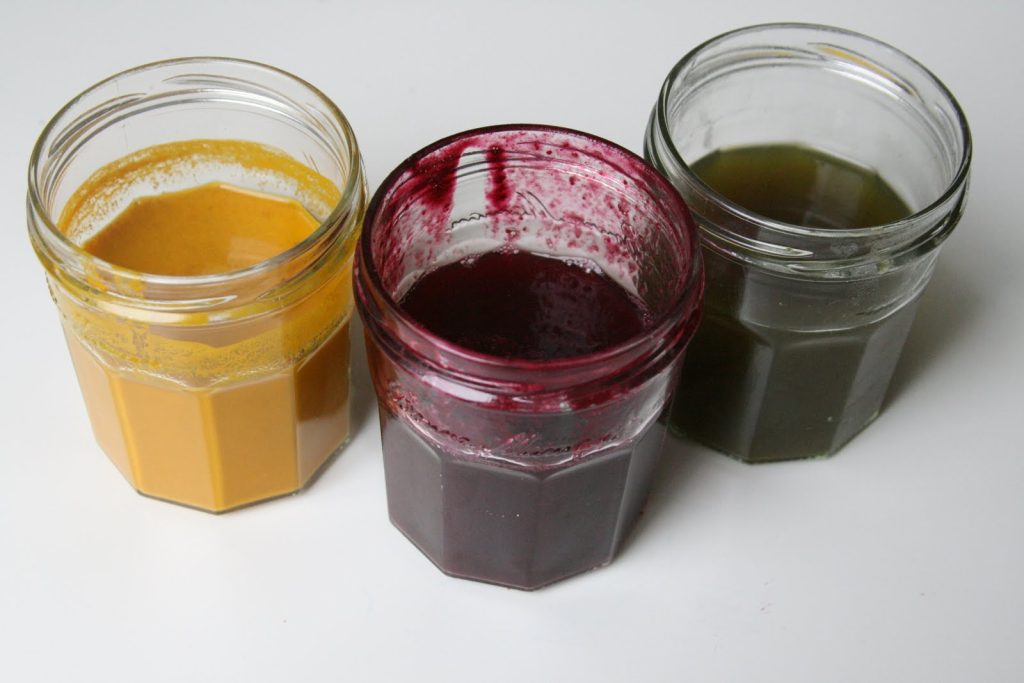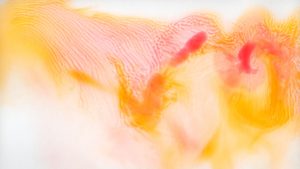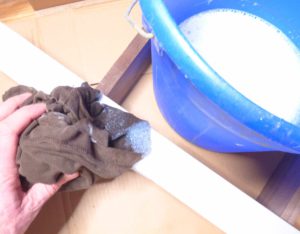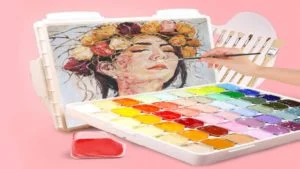Paint is a substance that consists of a pigment suspended in a liquid vehicle like water or oil. It is available in many colours. Paint composition may be of different types that are either oil or water-based. Paint serves as a sealant for surfaces to protect them from the harsh environment. However, you can also use paint for decoration purposes.
History Of Paint Composition
The first known paintings made between 20,000 and 25,000 years ago relied on natural substances like charcoal, fruit juice, earthy pigment, blood, lard, and milkweed sap.
Later, many civilizations used more sophisticated substances to produce paints. Uses of these paints include the decoration of books, figurines or walls. People used pigments such as red and yellow ocher, malachite green and chalk. They mixed the pigments with binders like gum arabic, beeswax and egg albumin. Lastly, people used oil to create a sealant.

Hebrews and Egyptians are the first ones to use paints for protection. They coved their ships with pitches and balsams. In the middle ages, people used to paint as a protective coating on wood in storefronts and signs. During this, artists began using linseed oil, the most common solvent till the twentieth century.
The twentieth century saw the most changes in paint composition and manufacture. In the 1940s, factories manufactured new polyurethane and styrene-butadiene based solvents. Furthermore, with the production of synthetic pigments and stabilizers, it became easier to mass-produce uniform batches of paint.
Today, paint manufacturers create paint made from synthetic pigments, resins, binders and solvents in high-speed mills that can mass-produce gallons of paint in a day.
Of all the types of paints produced, watercolour paints, oil paints, acrylic paints, and gouache, are the most popular among artists. Read on to find out the process of the paint composition.
Watercolour Paint Composition
Watercolour paints contain coloured pigments suspended in a vehicle. A vehicle consists of
- A binder, generally gum arabic or synthetic glycol
- A plasticizer to soften the binder
- A humectant to help the paint retain moisture
- An extender to thicken the paint
- Water

Once a paint manufacturer assembles the necessary raw ingredients, he begins by premixing the pigments with the vehicle ingredients. The proportions vary depending on the pigment used. Absorptive pigments require vehicles in larger quantities, while strong tinting pigments require dilute vehicles.
Mulling can take anywhere from a few hours to several days. Workers add water to make the paint less viscous. Following this, manufacturers allow the paint to age in large containers for a few weeks. Finally, machines pour the mixed paint into tubes or pans. Additionally, the paint could also be a concentrated liquid watercolour.
How to make watercolour paints at home?
Add 4 tablespoons baking soda and 2 tablespoons vinegar to a mixing bowl. Once the fizzing stops, add 1/2 teaspoon corn syrup and 2 tablespoons cornstarch. Mix until uniform. Split this mixture into smaller cups and add five drops of food colouring to each cup. Mix thoroughly. Now the paint is ready for your kids to enjoy.
Gouache Composition
Gouache is a water-based paint containing natural pigment, water and a binding agent. The paint dates back to the 9th century and is visible in ancient Persian art. It also made an appearance during the Renaissance in18th century Europe.
Manufacturers produce gouache by first grinding baryte, pigment power and dextrin solution on a flat surface like glass or marble. Then, they mix it with gum arabic and glycerine. Finally, they grind it until the paint obtains a smooth consistency. To thin the consistency, the factory adds water to the mixture.
How to make gouache at home?
The recipe consists of 2 parts gum arabic, 2 parts water and 1 part honey. To this mixture, add one drop of clove oil and vegetable glycerin and mix thoroughly. Add the pigment power, and your paint is ready to use
Oil Paint Composition
Oil paint is a slow-drying paint that was first used in Asia in the 7th century. consists of particles of pigment suspended in a drying oil like linseed, poppy, walnut, or safflower oils.
Drying oils absorb oxygen and change from a liquid into a hard, permanent coating. Pigments used in oil paints are much greater in quantity giving it a physical feeling. A paintbrush must push aside dense coloured pastes.
The paint-making process begins by weighing out oil and stearate. Powerful blades slowly mix the wax and oil mixture until combined. Following this, weight pigments are slowly to the oil. Machines slowly churn the paste, which can take four hours. One must ensure to thoroughly mix all pigment particles so that they are distributed in the oil mixture.
How to make oil paints yourself?
Add two scoops of pigment power on a glass slab and moisten it with a drop of linseed oil. Mix this into a firm paste and grind it using a glass muller. The paint is ready when you can pick a little of it on a palette knife and shake it off, leaving a little crest of paint.
Acrylic Paint Composition
Acrylic paint consists of minute plastic acrylic resin suspended in water and pigment. As the water molecules evaporate, the resin particles fuse and form a strong durable paint.
Acrylic paint contains a binder, which is generally an acrylic polymer emulsion. The binder is responsible for the overall quality of the paint. Hence, the binder needs to be resistant to UV related deterioration and cracking.
First, machines grind the pigments to break up any clump. Following this, a stirrer the binder and pigments together. The pigment is the determining factor in the cost of the paint. The higher the quality of the pigment, the more expensive is the paint.
How to make acrylic paint your self?
To make acrylic paint yourself, start with disbursing the pigments in water or alcohol on a glass surface. YOu need a 50:50 ratio of liquid and pigment. Grind the mixture with a glass muller till the pigment is dispensed evenly.
Conclusion
Knowing the paint manufacture process can be an excellent educational experience for both you and your artistic child. To date, your child would’ve only used paints from tubes or bottles. But, the process of creating paint and then using it will surely be more enjoyable. You can plan this as a group child activity and create different fun artwork.
Share with your friends





